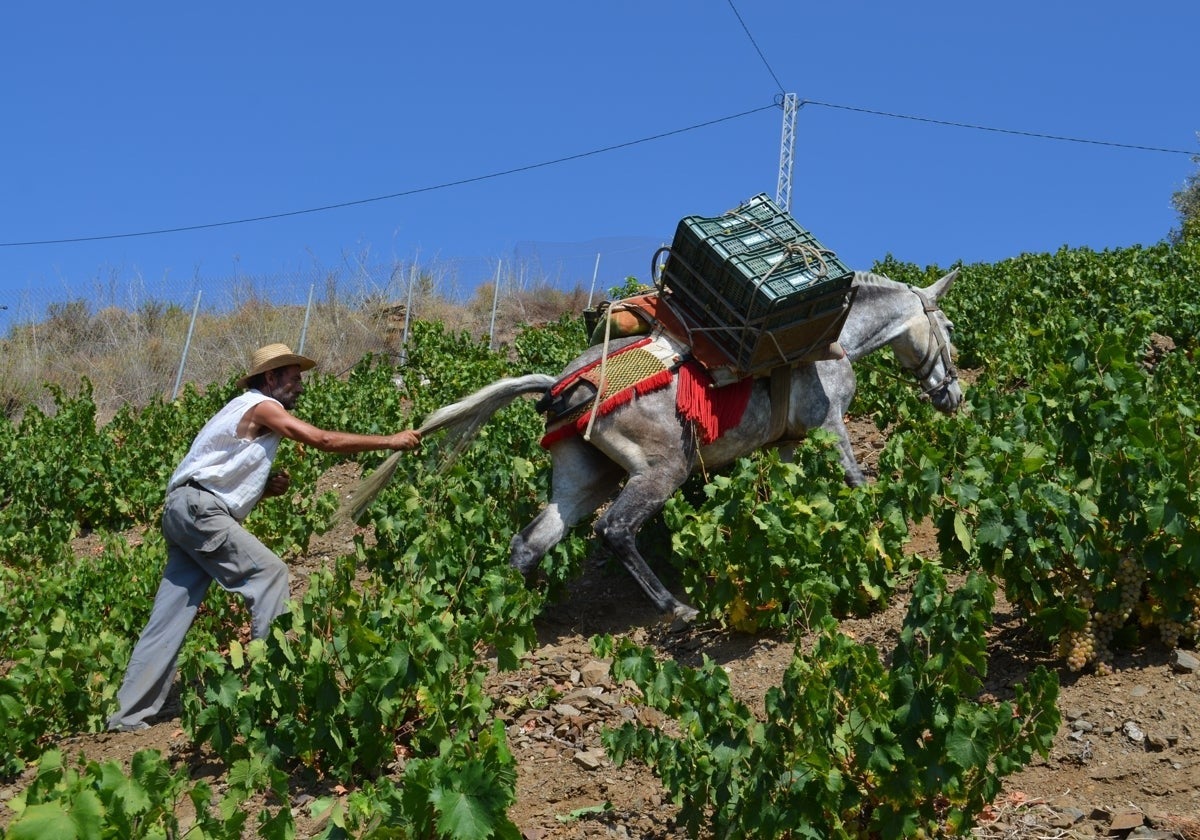Dreaded mildew expected to cause 30% reduction in Malaga grape harvest
The presence of the fungus varies greatly across the province, reaching up to 80 per cent in some areas, but with good fruit quality and a harvest of around two million kilos
Eugenio Cabezas
Axarquía
Monday, 25 August 2025, 11:36
The abundant rainfall in Malaga province last autumn, winter and spring has put an end to almost five years of drought and has benefited all crops. However, for the province's vineyards it has also led to the appearance of the dreaded mildew fungus.
As predicted in June, this year's grape harvest in Malaga will decline considerably as a result of the mildew. Initially, a drop in production of around 40 per cent was predicted, although it is currently expected to be closer to 30 per cent.
This year's grape harvest, which began at the end of July ago with the earliest varieties of white grapes, is proving to be one of the most complex in recent times, marked by a dual scenario: on the one hand, climatic conditions that have favoured the development of the vines and the good quality of the grapes; on the other hand, the strong incidence of mildew in some areas, with mixed consequences across the province.
From September 2024 to date, rainfall has increased by 28 per cent compared to the historical average, with particular intensity in October 2024 and March and April this year. Added to this is a general increase in temperatures, which between April and August have exceeded the usual average by more than two degrees Celsius.
In terms of plant health, the mildew has had a significant impact on the main wine-growing areas of Andalucía. In Malaga province some areas have been affected more than others: in Manilva, the western area of the Axarquía and the Montes de Málaga, losses of up to 80 per cent of the harvest have been reported by some vineyards.
Production
In the Antequera area the incidence is mixed, with some vineyards unaffected and others suffering losses of up to 50 per cent, according to a statement from the Regulatory Council of the Designation of Origin (CRDO) Málaga, Sierras de Málaga and Pasas de Málaga.
In contrast, in the eastern Axarquía area and the Serranía de Ronda, the presence of the fungus has been minimal. This uneven impact is due to the diversity of the environment, varieties and cultivation systems, the physical isolation of the production areas and the particular sensitivity of the predominant varieties in Malaga (Muscat of Alexandria and Pedro Ximénez), which are concentrated in the most affected areas.
The harvest has been under way almost simultaneously in the Axarquía since 30 July and in the northern part of the province since 4 August, slightly later than in the two previous years. It is currently progressing as usual from east to west "with completion expected in the Serranía de Ronda during the first half of October, provided that weather conditions remain stable," according to the CRDO.
Despite the impact of the mildew, forecasts indicate that total production for winemaking will be around two million kilograms, which would represent a decrease of around 30 per cent compared to 2024. In the case of the raisin sector with Designation of Origin, which is more dependent on the western Axarquía, the situation is even more delicate: a loss of between 40 and 50 per cent of the harvest is estimated, with a final production of around 600 tonnes of fresh grapes.
Overall, this year's 2025 harvest in Malaga "is shaping up to be smaller in quantity, but with fruit quality rated as good or very good, which will allow the province's wines and raisins to maintain their excellence despite the difficulties," according to the CRDO.

Comentar es una ventaja exclusiva para registrados
¿Ya eres registrado?
Inicia sesiónNecesitas ser suscriptor para poder responder.
Necesitas ser suscriptor para poder votar.